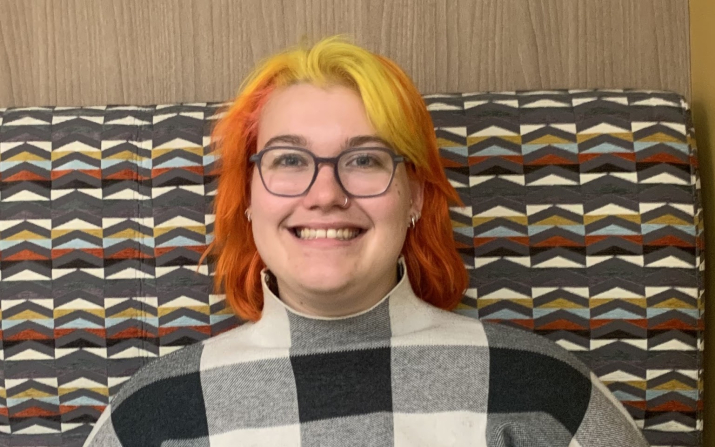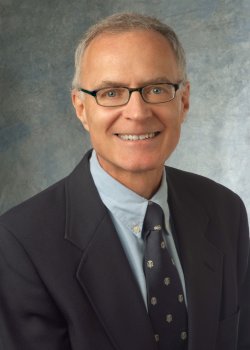Smith completes senior project, to begin M.S. studies

One of Jackson Smith’s primary goals as an engineer is to serve as an inspiration for women and members of the LGBTQ+ community in STEM. “You can be yourself, have a vibrant personality, and be good at science,” she said. “I'm a woman, LGBT, have colored hair, tattoos, and piercings and I also have been an extremely successful engineering student.”
Smith recently completed her senior project, "Microstructural Characterization of Additively Manufactured In-Situ Alloyed GRCop-42 in the As-Built and HIPed Condition." She conducted metallurgical analysis of the microstructure of AM GRCop-42 alloy, mostly focusing on how hot isostatic pressing changed the microstructure of the in-situ alloyed material. Dispersoids of Cr2Nb throughout solid Cu strengthen GRCop-42. The aforementioned dispersoids might be changed by the manufacturing process and heat treatment. Some of the characterization techniques she used included phase extraction, x-ray diffraction, optical microscopy, scanning electron microscopy and energy dispersive x-ray spectroscopy.
Using different techniques was what Smith enjoyed most about her project. "If I had just done one of the characterization techniques in my project, I would not have gotten the full picture,” she said. “Even with all the things I did do, there is still more analysis to be done to truly understand the effect of HIP treatment on the material.” She also enjoyed learning how to do phase extraction, pointing out that it used wet chemistry methods that she hadn't used with previous projects.
After Smith graduates from CWRU in January with her B.S. in materials science and engineering, she will start her M.S. studies at CWRU and plans to continue mechanical testing of these materials. Having worked closely with Ph.D. candidate David Scannapieco throughout her senior project, her M.S. research will complement Scannapieco's Ph.D. thesis on in-situ alloying during additive manufacturing of GRCop-42. Eventually, she hopes to contribute to new alloy and manufacturing developments.
"All of the work I was able to complete also would not have been possible without (Scannapieco) and the engineers at NASA Glenn Research Center, where I did all my testing and characterization,” said Smith. She also thanked her M.S. advisor, Distinguished University Professor John Lewandowski, for being “very helpful” with the writing of her work and understanding of the metallurgy, and David Ellis of NASA for “(being) crucial in getting the samples made for my senior project and with machining of samples that I will use for my M.S. research.”
Looking back on her undergraduate career, Smith appreciates the friendships and connections she has made in CWRU's Department of Materials Science and Engineering. "One of the great things about our department is that it truly is like a family and there has always been someone to help when I need it." Having served as a teaching assistant, she has appreciated the opportunity to mentor younger undergraduate students. She is also proud of completing a co-op and summer internship, as well as the research she completed in Lewandowski's Advanced Manufacturing and Mechanical Reliability Center.

